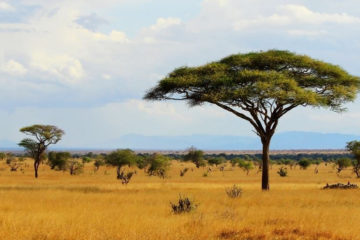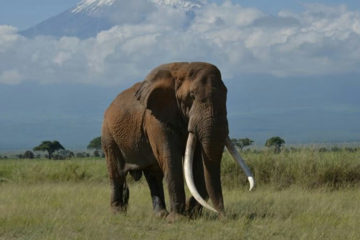Lake Turkana, a UNESCO World Heritage Site, is the largest alkaline lake in the world, and the largest lake of any kind in a desert. The area is inhospitable – but eerily beautiful – and the lake’s three islands are a stopover for migrant birds and a breeding site for crocodiles and hippos. Scenery, cultural visits and bird watching are the main attractions. There are big mammals in Sibiloi National Park on the shore of the lake, but this is not primarily a safari destination.
Best Time to Visit
Lake Turkana has a desert climate and rainfall is very low. The area can be visited at any time, but the scenery is most stunning after the rains, which peak in April and November. The wetter months should be avoided if you are driving up from Nairobi, as some tracks might become difficult to navigate.
Getting There
Lake Turkana is located in northern Kenya, 665km/414mi north of Nairobi. Loiyangalani on the southeastern shore is accessible by chartered flight or on organized truck trips. Charter flights are also available to Sibiloi. There are scheduled flights to Lodwar on the western side of the lake. There are several routes to the east and west sides of the lakes. There is no road connecting these two sides, but lake crossings can be organized at a hefty price. Some of the routes have become partially tarred, which makes the lake more accessible than it has ever been. Experienced 4×4 enthusiasts could undertake the trip independently, but ideally in a convoy of at least two vehicles. To get to the lake from Nairobi, you need to cross the Chalbi or Karoli desert.
Lake Turkana is not really a wildlife destination, but it’s famous for its crocodiles and bird colonies. Up to an estimated 120,000 Nile crocodiles breed on Central Island, which can be visited by boat. Sibiloi National Park protects the wildlife in the area, including some north Kenyan specials such as Reticulated giraffe, Beisa oryx, lesser kudu, gerenuk and Grevy’s zebra. Lion, leopard and cheetah are present, but not often seen.
Lake Turkana lies in the very dry, inhospitable north of Kenya. This is the hottest area of the country with daytime temperatures reaching up to 37°C/99°F. The annual rainfall is under 200mm/7in, but the ‘long rains’ peak in April and the ‘short rains’ peak in November, as elsewhere in the country.
Lake Turkana lies in the very dry, inhospitable north of Kenya. This is the hottest area of the country with daytime temperatures reaching up to 37°C/99°F. The annual rainfall is under 200mm/7in, but the ‘long rains’ peak in April and the ‘short rains’ peak in November, as elsewhere in the country.




